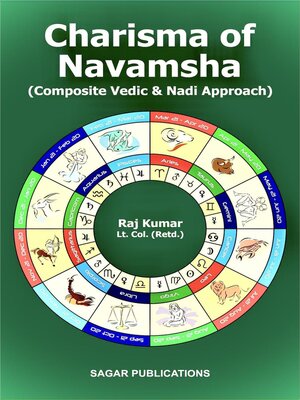
Sign up to save your library
With an OverDrive account, you can save your favorite libraries for at-a-glance information about availability. Find out more about OverDrive accounts.
Find this title in Libby, the library reading app by OverDrive.



Search for a digital library with this title
Title found at these libraries:
| Library Name | Distance |
|---|---|
| Loading... |
The credit for success of Vedic astrology over other systems goes in no small way to the system of Divisional charts or Vargas. Kalyan Verma (Saravali 3:12) opines that Vargas provide complete knowledge of Bhavas, without which it is impossible to take even a step in right direction into the great science (of astrology). The Vargas dispel the clouds of obscurity and hold the key to predictions and delineating a horoscope for deeper analysis. They unlock the hidden doors which refuse to open, even after the astrologer has examined the entire spectrum of variables for analyzing a bhava house.
The divisional charts are nothing but projections of mind in multiple time zones representing possibilities which might occur in different time frames and giving signals to understand the horoscope in a more meaningful and objective way. The basic concept behind Vargas is that a planet becomes highly potent by occupying certain degrees or division (of a sign) for certain aspects of life.
Among various Vargas, the relative importance of Navamsha is universally acclaimed. Astrologers consider it to be just next to birth chart or equal to birth chart or even better than the birth chart. Almost all astrologers use Navamsha and birth chart together to assess strengths of various houses and planets before giving any opinion.
In Vedic astrology, Navamsha occupies an outstanding position and draws one's attention for deeper understanding/ scrutiny due to its multifarious technique and usage. The additional inputs in the form of scintillating concepts by Jaimini and Nadi system have made the subject more engrossing. The author has tried to incorporate the same in the book. The study of a birth chart gives only the gross (Sthool) indications of characteristics of various houses and planets; while Navamsha offers their detailed (Sookshmatar) values. It is so because a Navamsha is basically equal to both in its size and extent to a quarter/ one fourth / pada of a Nakshtra, thereby giving it a stellar role. While a house represents a combined spectrum of 30 degrees, a Navamsha provides a microscopic view of 3° 20' or 1/ 9 part of a sign only.
The book consists of 18 chapters with illustrations from 64 charts and 24 tables. After six initial chapters author has incorporated various aspects of Navamsha and its various concepts of vedic, Jaimini, Nadis, Ashtakvarga and of transit.







